I stopped writing my blog when COVID-19 began spreading to become the pandemic that we all now know. My reasoning was that anything that I would write about paled into insignificance compared with the devastating effects of the virus. Looks like we are now in acceptance of a “new normal” and life goes forwards somehow. Two things have happened recently that I thought I’d write about to pass the time, using the power left on my Chromebook, as storm Francis has just taken out the electricity. One, a change in lifestyle, the other a consequence of my last blog post “Life on Mars”……
Let’s start with the lifestyle change. On advice I bought some goats milk to try as a replacement for cow’s milk. Just the one litre carton to give it go. Much to my surprise I liked it. Yes, the fat content is higher at 3.8g per 100ml instead of 1.5g per 100ml in our usual semi-skimmed but that’s not something that concerned me. I’m now buying at least 4 litres a week.
On the goat’s milk carton, I saw a competition to win a month’s worth of Glenisk products. Send your story and get entered into a draw. So, this is what I wrote:
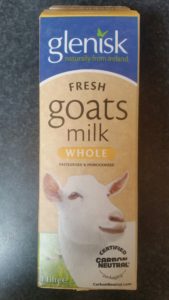
“I am a fairly fit person in my 60s but was diagnosed with a lack of energy and digestive problems. A suggestion was to try cutting out dairy products. This upset me greatly as a life-long lover of milk, cheese and yoghurt. Another suggestion was to try changing to goat’s milk. I don’t know why but I thought goat’s milk was going to be disgusting. Anyway, I have just bought some Glenisk Goat’s Milk and tried it in my usual cup of tea. Surprise, no difference in taste. Next the big one. Goat’s milk with my regular morning porridge. Well, absolutely delicious! I realised then that your goat’s milk is pure whole milk making my porridge nice and creamy. Reminded me of when I was young and we only had full milk from the milkman, and I loved the cream on top of the bottle! I hope you like my story.”
So far, I’m not a winner. But customer service at Glenisk appreciated my story and sent some vouchers in the post. I asked if there was anything they do where moisture would be important so that I can write about it on my blog. They came back with “I don’t think there would be much of a theme other than the rain that falls on our soil keeps it highly nutritious.”
Maybe taking goat’s milk products, or simply working at Glenisk, makes you prophetic but it’s less than a month since Glenisk customer service prophesied and we have since had storms Ellen and Francis, both with very heavy rainfall. To have this in August is unusual, but I suppose it’s been that kind of year. Plenty of moisture for your nutritious soil now Glenisk!
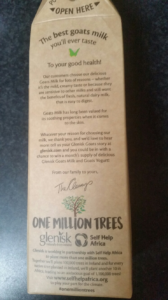
A prophesy of my own that I talk about in my eBook A Wetter Look at Climate Change is with a bit of knowledge about moisture and humidity, it was easy to predict that global warming would lead to more frequent destructive storms.
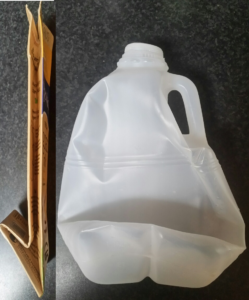
Elsewhere on the goat’s milk carton is a commitment by Glenisk to plant one million trees.
Another bonus from the goat’s milk carton is that it is easily compressed. We pay €5 to dispose of 3 recycle bags at the local civic amenity site. Have a look at this photo comparing our normal plastic 2 litre milk carton squashed to the goat’s milk carton compressed.
So, on the road to better digestion and more energy in my life. Also, helping in a small way to increase the number of trees, as well as, reducing the plastic burden on the environment and saving a bit of money. Feeling good.
Onto my big challenge. Since we are going to have several months of staying at home in the “new normal”, I had a look at Open University courses. After a bit searching, I came across S283 Planetary Science. This is a module running from October to June and includes structure and origin of our Solar System, the layout of the planets and their physical properties; meteorites, asteroids and comets and the giant gas planets; processes such as impact cratering and volcanism shaping the surfaces of many bodies in the Solar System; and exploration of the processes at work in the atmospheres of both terrestrial and giant planets.
It’s hard to conceive, but the land around me sits on rock that was once at the South Pole. Plate tectonics I’ve known about since geography at school. Studying this is going to be fascinating.
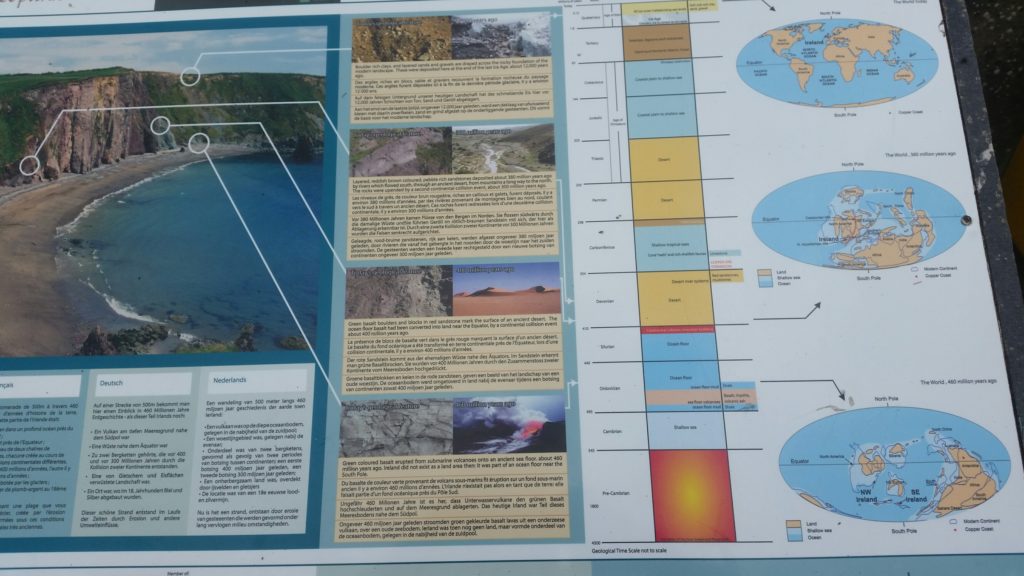
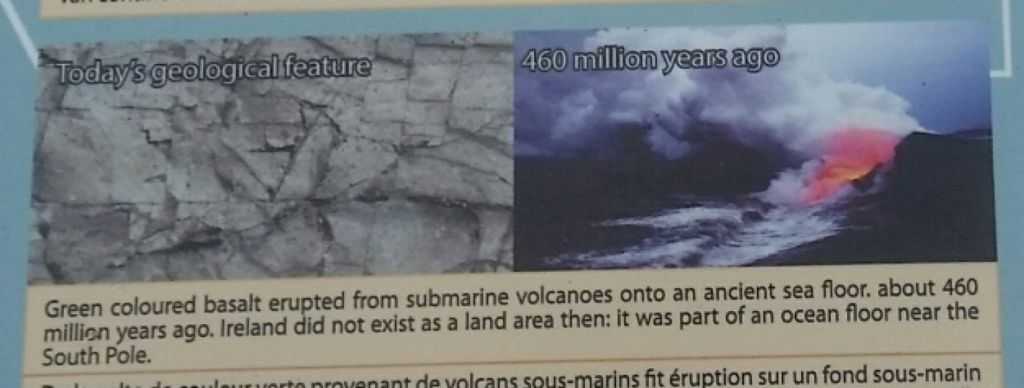
The photo is taken from an information board at my favourite cove just along the Waterford coast.
One of the topics is an introduction to Astrobiology and looks at the conditions for evolution of life on Earth and the possibility of life on other planets. In my Life on Mars blog post I write about talking to an Astrobiologist working in Spain, Armando Azua-Bustos. We had a Skype call and he enlightened me about the strategies that microorganisms use to protect against dehydration. This raises the possibility of life having survived the harsh conditions on Mars. Little did I think then that I would be studying this nine months later.
Welcome to my world of moisture
If you would like to hear more about moisture and humidity in everyday life, please sign up for email alerts of my blogs.

Leave a Reply